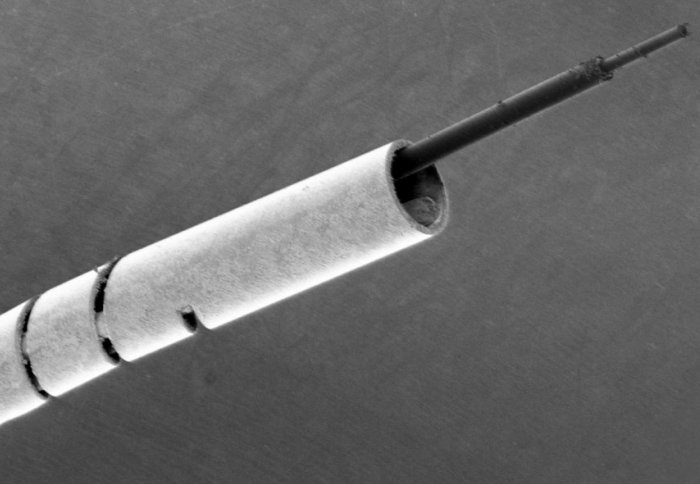Fibre-optic bot could seek out and treat cancers
Researchers at Imperial College London’s Hamlyn Centre are working on a fibre-optic robot the width of a human hair that could track down cancers and accurately deliver drugs.

A magnified image of fibre-bot (Credit: Imperial College London)
The ‘fibre-bots’ project is part of a wider precision surgery programme at Imperial, backed with £6.5m in funding from the Engineering and Physical Sciences Research Council (EPSRC). Made of a flexible hollow optical fibre, the devices will be controlled by a surgeon once inserted into a patient via an orifice, helping to detect and treat conditions of the breast, throat, lungs, and gastrointestinal system.
“We believe the new fibre-bot has great potential,” said Professor Guang-Zhong Yang, director of the Hamlyn Centre at Imperial College London and leader of the project.
“One example of a disease where we think it could prove useful is in ductal carcinoma, an early stage of breast cancer that often begins in the milk ducts. In theory, a flexible robot of this size would be able to travel inside the milk duct, map the extent of the disease, and enable reliable and repeatable treatments at the microscopic level to be administered by surgeons. This could minimise the trauma on patients and improve how they recover.”
Register now to continue reading
Thanks for visiting The Engineer. You’ve now reached your monthly limit of news stories. Register for free to unlock unlimited access to all of our news coverage, as well as premium content including opinion, in-depth features and special reports.
Benefits of registering
-
In-depth insights and coverage of key emerging trends
-
Unrestricted access to special reports throughout the year
-
Daily technology news delivered straight to your inbox










Water Sector Talent Exodus Could Cripple The Sector
Maybe if things are essential for the running of a country and we want to pay a fair price we should be running these utilities on a not for profit...